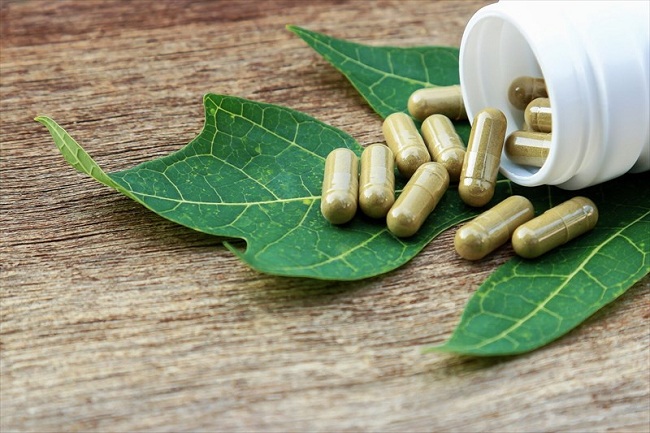Psychotic disorders are serious mental illnesses that cause abnormal thinking and perceptions. People with psychoses lose touch with reality. Two of the main symptoms are delusions and hallucinations. Delusion is an unshakable belief in something that is untrue. Hallucinations are false perceptions, such as hearing, seeing, or feeling something that is not there.
There are different types of psychotic disorders. These types of disorders include schizophrenia, schizoaffective disorder, and schizophreniform disorder.
Some people look to manage psychosis with herbal remedies rather than with medication a doctor prescribes.
Medications and counselling are conventional ways to alleviate the symptoms of psychosis. However, some herbs and supplements may also help. But that does not mean that all these herbs and supplements are always safe.
For one, experts’ say that taking Lophira alata, an herbal plant used traditionally to treat psychotic disorders, at the same time as Risperidone, an antipsychotic medication, can also interfere with the effectiveness of the medicine, making the symptoms worse or reducing the effectiveness of conventional treatment.
The study in the 2023 edition of the Journal of Current Biomedical Research stated that when risperidone is taken one hour before or after Lophira alata, the drug’s effectiveness is reduced.
A large number of patients with psychosis have been reported to simultaneously use both orthodox and traditional medicines in Africa.
A report in 2017 said about 45 percent of patients attending a tertiary health facility in Northern Nigeria use herbal medicines together with their antipsychotic drugs.
Also, simultaneous use of herbal and orthodox medicines has been reported in other parts of Africa, with a prevalence of over 50 percent reported in a study carried out in Ghana.
A prevalence of concurrent use of drugs and herbs of 20% was also reported in a study carried out in the United Kingdom.
Lophira alata, locally known as ekki or azobe and commonly as iron redwood, is widely distributed in West Africa, where its timber is used for construction purposes.
A decoction of L. alata stem bark is used for the treatment of a wide range of diseases, including psychotic disorders. Its antipsychotic properties have been evaluated and established in rats.
This study was carried out to determine the effect of simultaneous use of risperidone and Lophira alata in healthy human volunteers.
The first phase of the research was carried out to establish a baseline understanding of the effects of risperidone 2 mg on the bodies of 18 male subjects.
The second phase was carried out after a two-week washout period, where the subjects were randomly divided into three equal groups, and group A received risperidone (2 mg) and decoction of the herb (9.4 mg/kg) concurrently.
The people in group B received risperidone 2 mg and a decoction of the herb (9.4 mg/kg) was administered after 1 hour, and group C received a decoction of the herb (9.4 mg/kg) and risperidone 2 mg was administered after an hour.
Blood samples were collected at different times of the exercise that lasted 24 hours after drug administration, and the risperidone concentrations were studied.
Results show that there was a significant increase in the rate of absorption, peak plasma concentration (Cmax), and measure of drug exposure to the body, but a significant decrease in the time to achieve peak plasma concentration, half-life of absorption, and extent of drug distribution when risperidone and Lophira alata were administered concomitantly.
It means that although the movement of risperidone into the bloodstream after its concomitant administration with Lophira alata was significantly faster, the highest concentration of it in the brain—the organs where the medication is to work is reached relatively slowly.
After taking a drug, levels peak quickly in the blood and then drop slowly as the drug is eliminated (cleared from the body). Every drug has its own absorption curve. The highest concentration is called the Cmax, and the time taken to reduce the highest concentration by half (by 50 percent) is called a drug’s ‘half-life’ or T½.
Drug-herb interaction was observed to be more significant when Lophira alata was administered concurrently with risperidone than when administered one hour before or after Lophira alata.
A decoction of Lophira alata interacts with risperidone tablets when administered together, which may be attributed to an alteration in the mechanism of risperidone absorption by Lophira alata.
For example, certain drugs may be absorbed by the body faster when taken with a high-fat meal, and faster absorption may cause an excessive response or other health issues.
Drug absorption is the movement of a drug into the bloodstream after administration. Drugs are always absorbed more quickly than the body can break them down, so the highest concentration is reached relatively quickly, and then it takes longer to leave the body.
Although some herbal medicines like Morinda citrifolia (Indian mulberry), Securinega virosa (Snowberry tree), Picralima nitida (Abere in Yoruba), and Spinacia oleracea (commonly known as spinach) work almost as well as conventional treatments for psychotic disorders, preliminary evidence indicates herbs have adverse effects that many studies do not consider, so caution is advised against accepting the results wholesale.
Herbs’ complexity comes from the fact that they are whole plants rather than a single chemical active ingredient in a medication.
